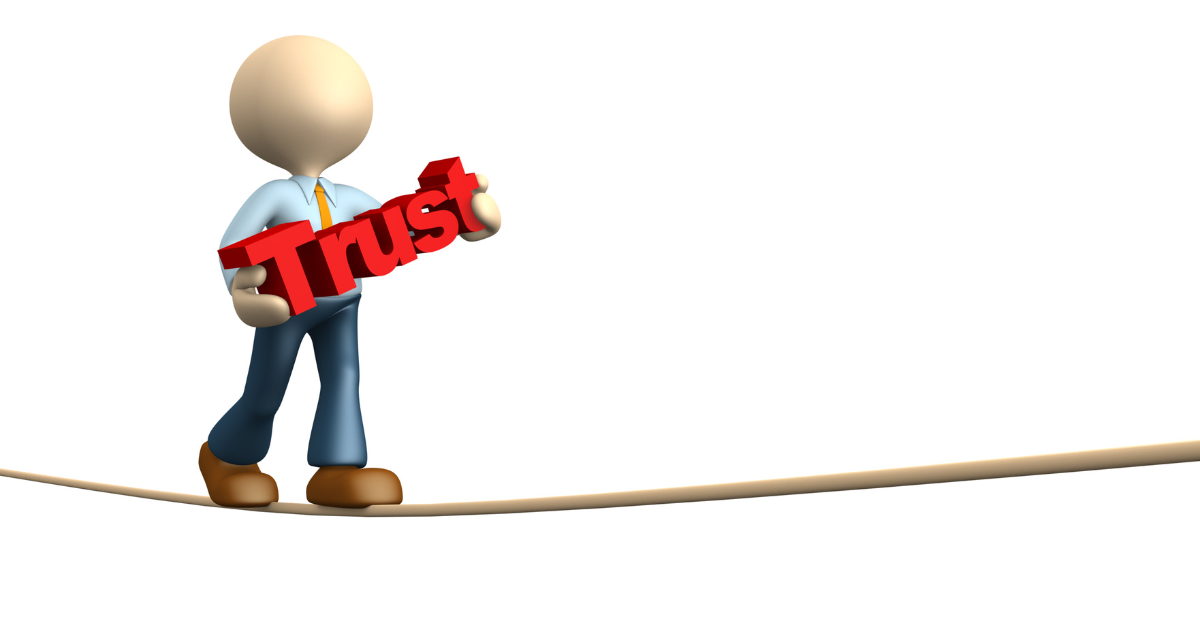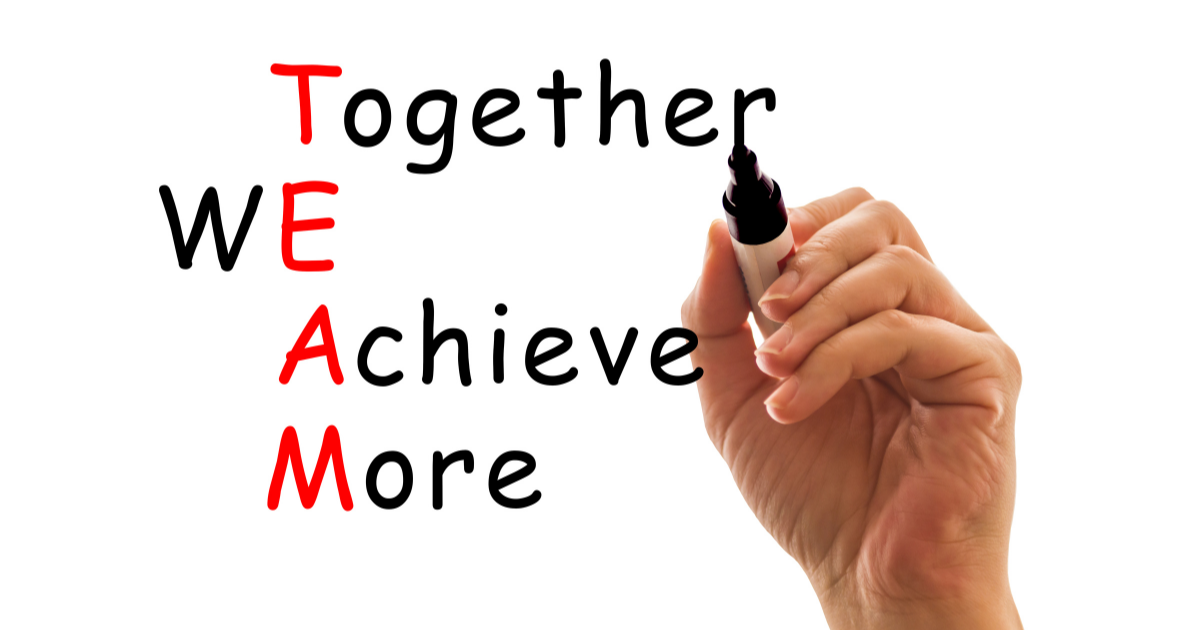You may have heard the saying, ‘united we stand, divided we fall.’ This phrase speaks to the power of teamwork and the importance of working together towards a common goal.
Effective teamwork can make all the difference in achieving success, whether it be in the workplace, sports, or any other aspect of life.
When individuals come together as a team, they have the ability to accomplish things beyond what they could achieve alone. With the right mix of skills, attitudes, and communication, high-performing teams can achieve extraordinary things.
In this article, we will explore the characteristics of teamwork and how to build an effective team. We will also examine the role of leadership in fostering teamwork and the importance of effective communication.
Additionally, we will discuss common challenges in teamwork and how to overcome them. By the end of this article, you will have a deeper understanding of the power of effective teamwork and how it can be harnessed to achieve great things.
Key Takeaways
- Effective teamwork requires collaboration, communication, and a shared vision.
- Clear roles and objectives, complementary skills, mutual respect, and trust are essential components of successful teamwork.
- Challenges in teamwork can be overcome through conflict management, open communication, and building trust within the team.
- Leadership plays a crucial role in fostering effective teamwork through delegation, motivation, decision-making, and conflict resolution.
Understanding Teamwork
You may have heard the phrase, “teamwork makes the dream work.” But what exactly is teamwork?
It’s more than just a group of people working together. It’s about collaboration, communication, and a shared vision.
So, why is it so important? Because when you have a team that works well together, you can accomplish more than you ever could on your own.
Defining Teamwork
Together, we can achieve so much more when we define teamwork as a collaborative effort towards a common goal. Collaboration benefits us in ways that we couldn’t achieve alone, as each team member brings their unique skills, knowledge, and expertise to the table.
Understanding team roles and group dynamics is crucial to achieving synergy potential, where the whole is greater than the sum of its parts. Effective teamwork skills, such as communication, trust, and accountability, allow us to work together seamlessly toward our shared objectives.
By defining teamwork in this way, we harness the power of collective intelligence and create a sense of unity that drives us to achieve greatness.
The Importance of Teamwork
With the power of efficient teamwork, you can achieve greatness.
In Personal Projects
Personal teamwork has numerous benefits, but it’s not without its challenges.
You need to establish accountability and project management protocols to ensure everyone is on the same page. Each team member brings their individual strengths to the project, which can lead to a more well-rounded and successful outcome.
Don’t hesitate to delegate tasks and trust your team’s abilities.
In Professional Settings
Collaboration in professional settings can lead to innovative solutions and a sense of camaraderie among colleagues. When team dynamics are strong, collaborative efforts can result in group productivity that’s greater than the sum of individual contributions.
Synergy effects can be seen as ideas are shared and built upon, leading to collective achievements that wouldn’t have been possible without the power of effective teamwork.
Characteristics of High-Performing Teams
Get ready to learn how these traits can help take your team to the next level.
Clear Goals and Objectives
Clear goals and objectives are essential for a team to work effectively and efficiently. Measuring success and setting benchmarks are important as well.
Tracking progress allows the team to adjust objectives as needed and ensure they stay on track. Celebrating milestones along the way can boost morale and keep everyone motivated.
So, make sure that your team has a clear understanding of their goals and objectives.
Complementary Skills and Abilities
When team members possess complementary skills and abilities, they can work together like puzzle pieces, fitting perfectly to accomplish tasks and achieve goals. Collaborative work thrives when skill diversity is present, and the benefits of synergy can be reaped.
Effective partnerships are built on complementary strengths, and with this foundation, the possibilities for achievement are endless. Consider the following:
- When diverse skills are brought together, new and innovative ideas can be generated. For example, an engineer and a marketer working together to create a product that is both functional and marketable.
- Complementary skills can also lead to increased efficiency and productivity. For example, a writer and an editor working together to produce high-quality content in a shorter amount of time.
Mutual Respect and Trust
Mutual respect and trust are essential components of a successful team, where members can rely on each other for support and collaboration. Building trust is crucial as it fosters a sense of security and confidence among team members, which can lead to better performance and outcomes.
Effective communication plays a vital role in establishing mutual understanding and respectful collaboration. When team members communicate clearly and respectfully, they can work towards common goals while avoiding misunderstandings and conflicts.
Trustworthy relationships are built when team members consistently demonstrate reliability and honesty and when they’re willing to give and receive feedback. Ultimately, mutual respect and trust are not only vital for the success of a team, but they also contribute to a positive and fulfilling work environment where everyone feels valued and supported.
Open and Honest Communication
To create an environment of trust and transparency within your team, it’s important to communicate openly and honestly with each other.
This means actively listening to your teammates, being vulnerable and trusting them enough to share your thoughts and feelings, and paying attention to nonverbal communication cues.
Creating a feedback culture within your team is also essential, as it allows for constructive criticism and growth.
Conflict resolution is another aspect of open communication, as it helps to address any issues before they become bigger problems.
Building an Effective Team
A team is only as strong as its weakest link, so it’s important to invest time and effort into building a truly cohesive and high-performing team.
Establishing Team Goals and Roles
You’ll need to establish specific goals and roles for each member of your team in order to work effectively together. Defining clear objectives and assigning tasks that play to each individual’s strengths will help foster accountability and ensure everyone is working towards a common goal.
Facilitating Team Cohesion
Creating a strong team bond is essential for achieving success together. You can do this by encouraging open communication, fostering trust, and promoting a positive team culture.
To improve team morale and promote unity, consider incorporating team-building activities, icebreakers for teams, and team-bonding exercises into your routine. These activities not only help break down barriers and build relationships, but they also promote collaboration and problem-solving skills.
Encouraging Team Engagement
To get your team engaged, it’s important to regularly check in with each member individually and provide opportunities for them to take on new challenges and responsibilities. This will increase employee motivation and foster a sense of trust and collaboration within the team.
Additionally, implementing team-building activities can create a fun and inclusive environment, encouraging feedback and communication. It’s important to recognize and reward teamwork, whether through verbal recognition or tangible rewards.
Implementing Conflict Management Strategies
When conflict arises within the team, it’s important to have a plan in place to address it and find a solution that works for everyone.
Collaborative solutions are key to resolving conflicts and ensuring everyone’s voices are heard. Active listening is also crucial in understanding each other’s perspectives and finding common ground.
Compromise techniques can be used to find a mutually beneficial solution.
Emotional intelligence plays a significant role in managing conflicts, as it allows individuals to regulate their emotions and empathize with others.
Remember, conflict is inevitable in any team, but how we handle it makes all the difference.
Teamwork and Leadership
As a leader, you play a crucial role in your team’s success. Your leadership style can greatly impact the effectiveness of your team’s collaboration and communication.
The Role of a Leader in a Team
Effective teamwork requires a leader who inspires and guides team members toward a common goal. A leader’s role in a team is crucial in ensuring the success of the team.
Here are four important ways in which a leader can contribute to effective teamwork:
- Leadership strategies must be implemented to ensure that the team is working efficiently. This includes effective delegation of tasks and responsibilities, ensuring that each team member is working to their strengths.
- Motivation techniques must be employed to keep the team members motivated and focused on achieving their goals. This could include setting targets and rewards for achieving them.
- Decision-making skills are important in ensuring that the team is moving in the right direction. The leader needs to be able to make informed decisions that are in the best interest of the team.
- Conflict resolution tactics must be employed to ensure that any conflicts are resolved quickly and effectively, preventing any negative impact on the team’s performance.
Leadership Styles for Effective Teamwork
To achieve success in teamwork, you need to understand the different leadership styles that can be employed.
1. Transformational Leadership
Transformational leadership is about inspiring and motivating team members. Leaders in this style transform their teams through their values, ideals, and long-term vision. They lead by example, setting high standards and expectations.
These leaders stimulate intellectual curiosity, encouraging followers to explore new ways of doing things. They prioritize team development, often identifying potential, nurturing talent, and promoting growth.
This style can foster a strong sense of purpose and dedication among team members. However, it may not be suitable for situations requiring quick, decisive action or strict adherence to procedures.
2. Servant Leadership
Servant leaders put the needs of the team first. They are focused on serving their team members, supporting their development, and enhancing their performance. Their goal is not to exercise power but rather to help others succeed.
Empathy, humility, and altruism are key traits of servant leaders. They work hard to create a positive, inclusive culture, often leading to high team morale and productivity.
However, this style might be less effective in highly competitive environments or when strong authoritative leadership is necessary.
3. Autocratic Leadership
Autocratic leaders make decisions without consulting their team. They have full control over the team, often dictating work methods and processes. They are good at providing clear direction and setting expectations.
While this can lead to quick decision-making, it can also result in lower team morale due to a lack of involvement in decisions. It’s best suited for situations where decisions need to be made rapidly without group consensus.
Nevertheless, this leadership style should be used cautiously to avoid fostering a hostile work environment.
4. Democratic Leadership
Democratic leaders take a collaborative approach, involving team members in decision-making. They value feedback and foster a culture of shared responsibility.
This leadership style encourages creativity and can lead to high team satisfaction and a strong sense of ownership. However, it can slow decision-making and be less effective in a crisis when swift action is needed.
Democratic leadership is generally effective in promoting a positive, productive, and innovative work environment.
5. Laissez-Faire Leadership
Laissez-Faire leaders give their teams a great deal of autonomy, allowing team members to make their own decisions. They provide resources and support as needed but generally keep a hands-off approach.
While this can foster innovation and creativity, it may also lead to a lack of direction or oversight. This style is best suited for highly skilled, self-motivated, and experienced teams.
However, it might not be effective when team members lack the necessary skills or motivation to work independently.
6. Transactional Leadership
Transactional leaders work through a system of rewards and punishments. They set clear roles, tasks, and goals for team members, and success is rewarded while failure is penalized.
This approach can result in consistent output and high productivity. It works best in structured environments with well-defined jobs.
However, transactional leadership might stifle creativity and innovation. It can lead to employee dissatisfaction if they perceive the work environment as transactional and lacking personal growth opportunities.
7. Charismatic Leadership
Charismatic leaders inspire and motivate team members through their personal charm and persuasive communication. They generate enthusiasm and are often able to articulate a compelling vision.
This style can lead to high levels of team morale, engagement, and productivity. However, the success of the team can become tied to the leader’s presence, which can be risky.
Charismatic leadership is most effective when combined with a genuine concern for the team’s well-being and sustainable performance metrics.
8. Strategic Leadership
Strategic leaders balance a focus on long-term direction with day-to-day operational concerns. They align people, resources, and processes to achieve strategic goals.
This approach helps organizations navigate change and uncertainty. Strategic leaders are often good at anticipating trends, planning accordingly, and aligning the team’s efforts with broader business objectives.
However, they need to balance future focus with immediate concerns to avoid disconnection from daily operational realities.
9. Participative Leadership
Participative leaders involve team members in the decision-making process, fostering a sense of ownership and commitment. They believe in the power of collective wisdom.
This leadership style can increase job satisfaction and team morale. However, the process can be time-consuming and may not be suitable for urgent decisions or when the team lacks sufficient expertise.
Participative leadership promotes a democratic environment where everyone feels valued and engaged.
10. Coaching Leadership
Coaching leaders prioritize the development of their team members. They act as mentors, identifying strengths, weaknesses, and opportunities for growth. They help team members set and achieve personal goals.
This style can be powerful for employee development and job satisfaction, leading to a highly competent team. However, it requires time and a willing team.
Coaching leadership might not be effective when the leader lacks the necessary expertise or when team members are resistant to feedback and change.
11. Situational Leadership
Situational leaders adjust their leadership style based on the situation and the competence and commitment of their team members. This flexible approach allows them to adapt to different circumstances.
This style encourages leaders to be dynamic and adaptable, which can be effective in a fast-paced, changing environment. However, it requires high levels of judgment and adaptability from the leader.
Situational leadership is about choosing the right leadership style for the right people based on their skills, knowledge, and enthusiasm.
12. Directive Leadership
Directive leaders provide clear instructions about what needs to be done and how. They set objectives, timelines, and standards, expecting team members to follow them.
This leadership style can lead to high levels of efficiency, especially in teams requiring strong guidance. However, it might inhibit creativity and decrease job satisfaction.
Directive leadership can be effective when tasks are routine or complex or when there’s no room for error.
13. Cross-Cultural Leadership
Cross-cultural leaders are able to work with and manage a diverse team from various cultural backgrounds. They are culturally sensitive and promote mutual respect and understanding.
This leadership style is critical in today’s globalized world. However, it requires an understanding of different cultures, adaptability, and effective communication skills.
Cross-cultural leadership can lead to innovation and a wider range of perspectives, but it requires constant learning and adaptability from the leader.
14. Visionary Leadership
Visionary leaders are those who inspire their teams with a compelling vision of the future. They have a clear sense of direction and can effectively communicate this vision to their team members.
This style can be highly motivating and can foster an environment of innovation and change. However, visionary leaders also need to balance their forward-thinking approach with attention to the day-to-day operations of their teams.
Visionary leadership can be particularly effective during times of change, as these leaders can guide their teams toward a new direction or purpose.
15. Affiliative Leadership
Affiliative leaders emphasize building strong relationships among team members. They create an environment of trust and harmony, promoting a sense of belonging within the team.
This style is particularly useful in resolving conflicts, building team harmony, and boosting morale. However, it’s important to balance affiliative leadership with a focus on performance and goal achievement.
Affiliative leadership can lead to a strong and cohesive team, but leaders need to ensure they also maintain clear performance expectations and standards.
16. Pacesetting Leadership
Pacesetting leaders set high standards for performance and exemplify these standards themselves. They expect team members to perform at their level and often lead by example.
This style can lead to high productivity when team members are self-motivated and highly competent. However, it can also lead to burnout if these high expectations are not balanced with support and recognition.
Pacesetting leadership is best used with a motivated and competent team and when the goal is high performance and excellence.
17. Authentic Leadership
Authentic leaders are true to themselves, transparent, and lead with their values. They are self-aware and recognize their strengths and weaknesses. They build trust through integrity and transparency.
Authentic leadership can result in high levels of trust and respect from team members. However, authentic leaders need to ensure their personal values align with those of the organization and team.
Authentic leadership promotes a genuine, open, and trustworthy work environment but requires consistent self-reflection and self-awareness from the leader.
18. Ethical Leadership
Ethical leaders prioritize doing the right thing. They lead with integrity, promoting fairness and ethical behavior within the team. They consider ethical implications in decision-making and set a strong moral example.
This style can foster trust, respect, and a positive reputation for the team and the organization. However, it requires a leader with a strong ethical compass and the courage to make difficult decisions based on ethical considerations.
Ethical leadership can lead to a strong, principled team and organization. However, it might involve tough decisions and requires a high level of integrity from the leader.
19. Shared Leadership
Shared leadership involves distributing leadership responsibilities within the team. In this model, team members share leadership roles and make decisions collectively.
This approach can foster a sense of empowerment and engagement among team members. However, it requires a mature team with good collaboration skills and mutual respect.
Shared leadership promotes a participatory environment and can lead to innovative ideas and shared ownership. However, it requires clear communication and role definitions to prevent confusion.
20. Bureaucratic Leadership
Bureaucratic leaders follow rules rigorously and ensure that their team members also strictly follow procedures. They stick to policies and procedures and base their decisions on a set protocol.
This style is beneficial in work environments where safety, quality, or specific standards are paramount. However, it can stifle creativity and discourage initiative from team members.
Bureaucratic leadership can ensure consistency and adherence to standards, but it may inhibit flexibility and adaptability.
Effective Team Communication
You know that teamwork is the key to success, but did you know that effective communication is the key to effective teamwork?
Without clear and open communication, your team can easily become disjointed and unproductive. That’s why it’s important to develop strategies for improving team communication.
The Importance of Communication in Teamwork
Effective listening and being able to pick up on nonverbal cues are key to understanding each other’s perspectives and ensuring active participation from all members.
Creating a feedback culture, where everyone is encouraged to give and receive constructive criticism, can help to improve communication and strengthen the team.
Language barriers can pose a challenge, but finding ways to overcome them, such as using translation tools or learning key phrases, can help to build stronger relationships.
Strategies for Improving Team Communication
If you want to improve your team’s communication, there are three key strategies you should focus on.
Regular Meetings
Gathering regularly for meetings is a great way to keep the team informed and on track. Meeting frequency is important, as it ensures that everyone is on the same page and aware of any updates or changes.
Proper agenda planning is crucial to ensure that meetings are productive and efficient. Virtual meetings can also be utilized to accommodate remote team members, and meeting facilitation is necessary to keep discussions on track and ensure that everyone has a chance to participate.
Meeting follow-up is important to ensure that tasks are completed and progress is made.
Open Feedback Culture
Encouraging an open feedback culture enables you and your team to freely express your opinions and ideas, leading to a more collaborative and inclusive team environment. By creating a safe space for constructive criticism, you can foster trust within your team and promote effective listening.
The benefits of open feedback are undeniable:
- it allows for individual growth
- it promotes team improvement
- fosters better results
Effective Communication Tools
Utilize various communication tools to enhance your ability to collaborate with others and achieve your team’s objectives. Collaborative tools, such as video conferencing, instant messaging, and project management software, can help team members stay connected and informed, regardless of their location.
Virtual communication can be challenging, so it’s important to be aware of nonverbal cues, such as body language and tone of voice. Active listening is also crucial to effective communication, as it helps to ensure that everyone’s ideas and perspectives are heard and understood.
Cultural differences can also impact communication, so it’s important to be aware of them and adapt your communication style accordingly.
Common Challenges in Teamwork
As you embark on your journey towards effective teamwork, it’s important to recognize the common challenges that teams face. Embrace these challenges as opportunities for growth and development, and watch your team thrive.
Lack of Clear Roles and Responsibilities
You may be experiencing frustration due to unclear roles and responsibilities within your team, causing confusion and hindering progress. This lack of role clarity can negatively impact team dynamics, leading to ineffective performance evaluation, task allocation, and accountability measures.
Addressing this issue head-on is important by having open and honest conversations with your team members about their roles and responsibilities. Take the time to define each person’s role and the tasks they’re responsible for.
Poor Communication
Misunderstood expectations, missed deadlines, unclear instructions, ineffective meetings, and lack of feedback are some of the negative outcomes resulting from poor communication.
Without clear communication channels, team members may not fully understand the expectations of their role or the project’s goals. In addition, unclear instructions can result in mistakes being made, which can further delay progress and lead to additional frustration.
Ineffective meetings, where team members are not fully engaged or are not given the opportunity to contribute, can also lead to a lack of progress and a sense of disconnection within the team.
Conflict and Disagreement
When disagreements arise within a team, tensions can rise and create a divide. It’s important to remember that conflict and disagreement are natural parts of any group dynamic. What separates successful teams from unsuccessful ones is their ability to manage these differences effectively.
This means finding compromise, collaborating rather than competing, and building consensus. It’s not about avoiding conflict altogether; it’s about resolving conflicts in a way that benefits the team as a whole.
When you approach conflict with an open mind and a willingness to listen and understand other perspectives, you can turn disagreements into opportunities for growth and improvement.
Lack of Trust
Now that you understand how conflict and disagreement can affect the effectiveness of teamwork, it’s time to address another common issue that can hinder collaboration: lack of trust.
Trust is the foundation of any successful team, and without it, communication breaks down, relationships suffer, and progress stalls.
But rebuilding trust is possible, even after betrayal or mistrust. It starts with honest communication and a willingness to acknowledge mistakes and work towards healing relationships.
Overcoming mistrust requires patience and effort, but the rewards are worth it.
Overcoming Teamwork Challenges
When it comes to teamwork, challenges are bound to arise. But don’t let those obstacles get in the way of achieving your goals.
Clarifying Roles and Responsibilities
Role clarity is essential for the smooth functioning of a team, and it helps to avoid ambiguity and confusion. When defining team roles, it’s important to consider each person’s strengths, weaknesses, and areas of expertise.
Encouraging Open Communication
Encouraging open communication is like watering a plant—it keeps the team’s ideas growing and flourishing.
Listening actively, encouraging feedback, fostering transparency, promoting collaboration, and creating a safe space are all ways to ensure that your team is communicating effectively.
Managing Conflict Effectively
You’ve already learned about the importance of open communication in building a strong and effective team. However, conflicts will inevitably arise among team members.
The key to managing conflict effectively is to have a solid conflict resolution plan in place. This means understanding the root causes of conflict and developing strategies to address them.
Building Trust within the Team
Here are some effective strategies to build trust within your team:
- Try trust-building exercises like sharing personal stories or engaging in team-building activities.
- Recognize the importance of vulnerability and encourage team members to share their thoughts and feelings openly.
- Highlight the benefits of trust.
- Acknowledge common trust barriers, like fear of judgment or lack of transparency.















